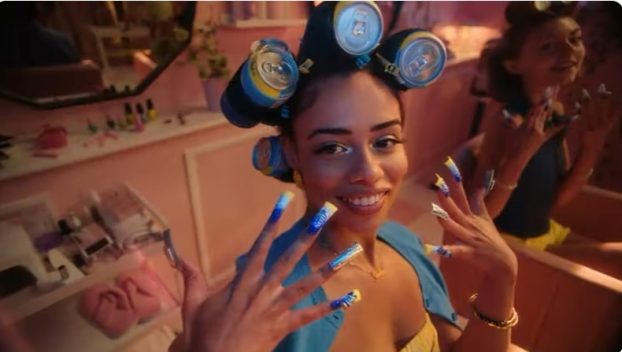This weekend countless kids (and we bet a few adults too) will be going on Easter egg hunts or taking a big bite out of the ear of a chocolate bunny. What better time than today to roll out some of the great work from confectionery brands over the years. Strategy curated some of the most delightful and delectable of spots from the past to present day, with the help of Martin Shewchuk – director and former ECD at JWT and a Cannes Lion winner for the 2004 Kit Kat spot, “Male Model” – and Simon Creet, VP, CCO at The Hive, where he’s done award-winning work on Mondelez’s brands Maynards and Cadbury.
Smarties/Ogilvy & Mather
You can probably still hear the jingle now. “Do you eat the red ones last?” Nestle’s Smarties rode the catch phrase from Ogilvy & Mather for decades (well into the ’90s, as this spot attests), imprinting it in more than one generation’s brains, particularly Creet’s, who says he’s sure he’ll still be able to sing the tune word for word into his 80s.
“This was a time of much looser restrictions around advertising to kids,” Creet recalls. “So, speaking as a kid from this era, when Smarties came on TV with cartoonish commercials and a tremendously catchy jingle that they replayed in spot after spot, it worked.
“And yes, to this day, red Smarties are just a little more special than the rest of the box.”
Caramilk/Scali McCabe Sloves
[iframe_vimeo video=”61738119″]
You can’t talk about chocolate bar ads in Canada without someone mentioning the “Mona Lisa” spot for Caramilk, by the late Gary Prouk while at Scali McCabe Sloves, part of the brand’s long-running “Caramilk Secret” campaign. The 1973 spot is the only Canadian creative inducted into the Clio Hall of Fame. Magnifico indeed.
Coffee Crisp/Ogilvy & Mather
[iframe_youtube video=”EXTyLAymlVE”]
How do you like your coffee? This classic line, with the sweet punchline, “I like my Coffee Crisp,” had been running for some time when this 1991 “Bubbies” spot – by Nancy Vonk and Janet Kestin at Ogilvy & Mather – ran in Canada. And the ad’s creators were seemingly all-too-aware of that, Shewchuk says.
“When this Coffee Crisp ad ran in the early ’90s, it was essentially mocking the tag line for a campaign that had been running since the ’60s,” he says. “This spot was revolutionary at the time since most companies tend to think of their slogans as sacred.
“It was very insightful on the part of the creative team since consumers had been making fun of the old campaign for years.”
Random bits of information from Vonk, SCTV’s Andrea Martin directed this spot, while John St.’s Angus Tucker worked behind the scenes as an account director.
Kit Kat/JWT
[iframe_vimeo video=”91532500″]
Ranked as the top confectionery ad of 2004 by the Gunn report, this male model spot by Nestle’s Kit Kat brand also earned JWT Toronto a Cannes Lion. But why male models, you may ask. Aside from the love for Zoolander (which came out in 2001), who better to remind consumers they deserve a break now and then, preferably with a Kit Kat in their hand.
McDonald’s, Cadbury/Cossette
[iframe_vimeo video=”91743376″]
It wouldn’t be Easter without the clucking bunny (or in this case, a slightly larger, furrier creature). Proving Creet’s point that confectionery brands in Canada have staying power, McDonald’s spot for this year’s holiday ties in Cadbury Creme Eggs and harkens back to the classic ad featuring the Easter bunny. This time, the animal in the barn is conveying the combo of a milk and egg product. If you can’t beat ’em, adapt them, right?
Dairy Milk/Fallon London
[iframe_youtube video=”7S13-q_aprc”]
Okay, not all the best Candy ads are Canadian. Let’s hop across the pond for this Cadbury Dairy Milk spot, chosen by both Shewchuk and Creet, who say “Gorilla” by Fallon London raised the bar for candy commercials.
“For the first time, a confectionery advertiser used their air time to simply demonstrate the joy that the product delivered,” Creet says.
“No one had ever done a chocolate bar ad before that didn’t show someone eating the product,” adds Shewchuk. “In 2007 it was considered an ‘entertainment piece’ created to appeal to a broader range of consumers beyond TV and spread through ‘viral marketing,’ a fairly new and innovative concept at the time.”























